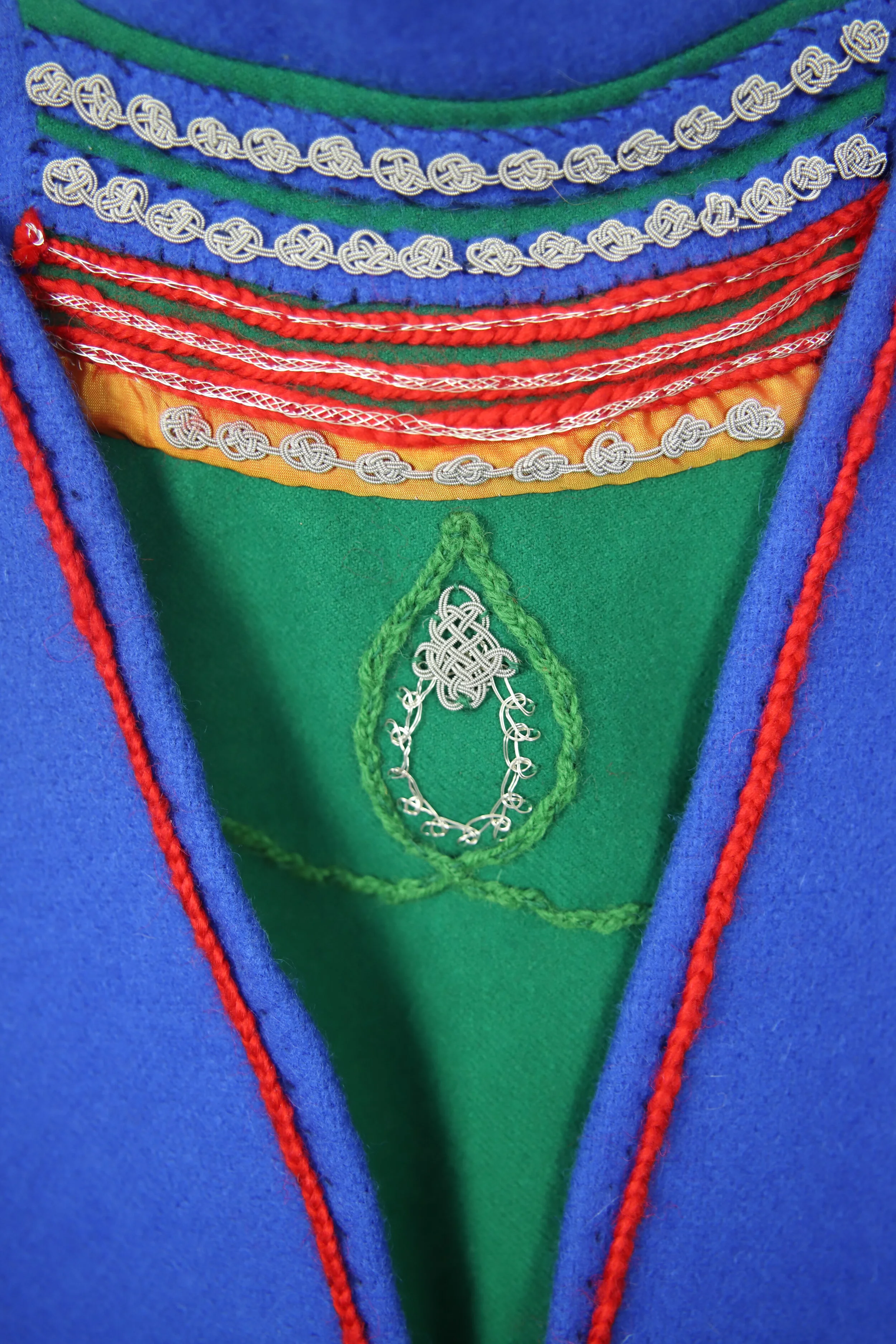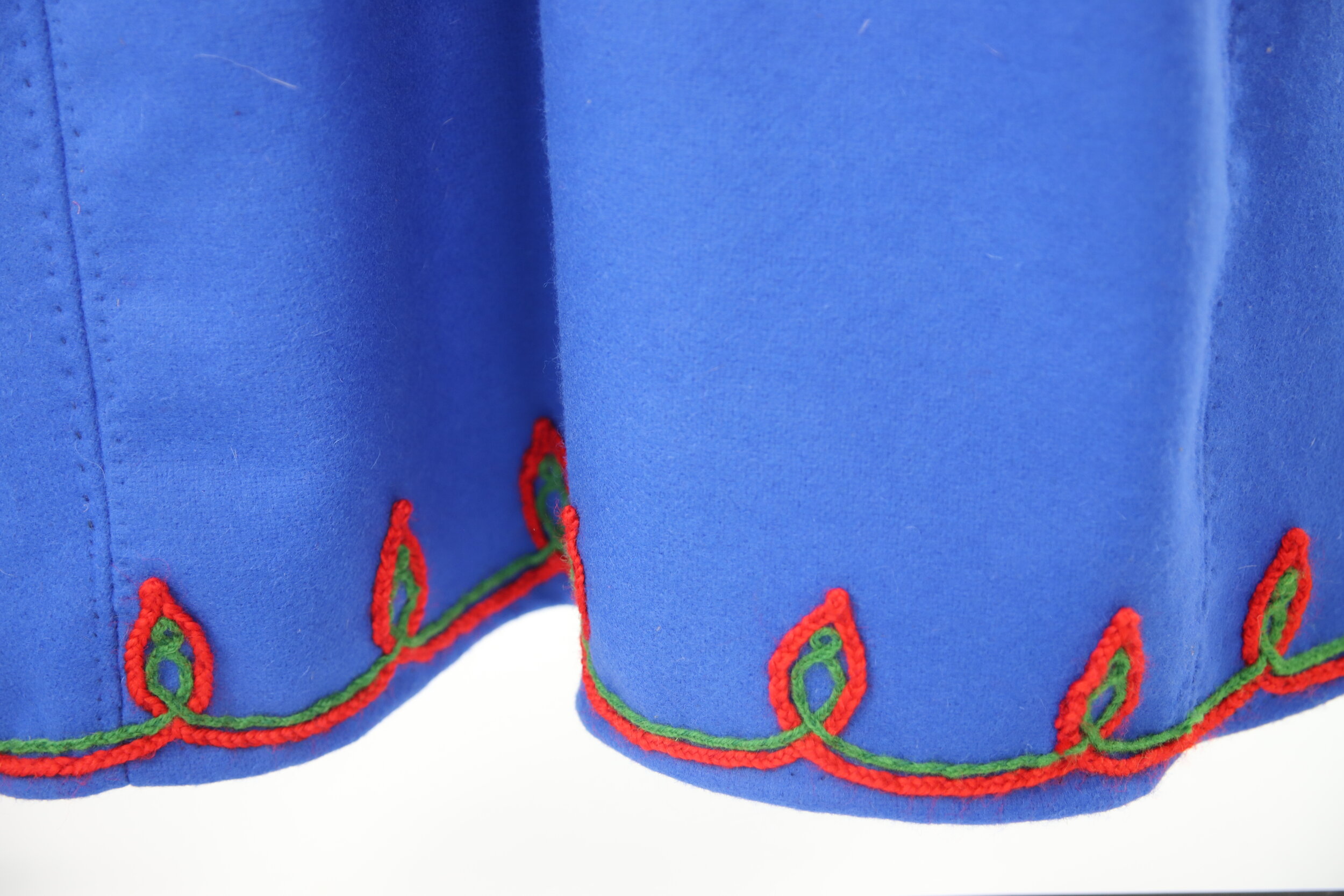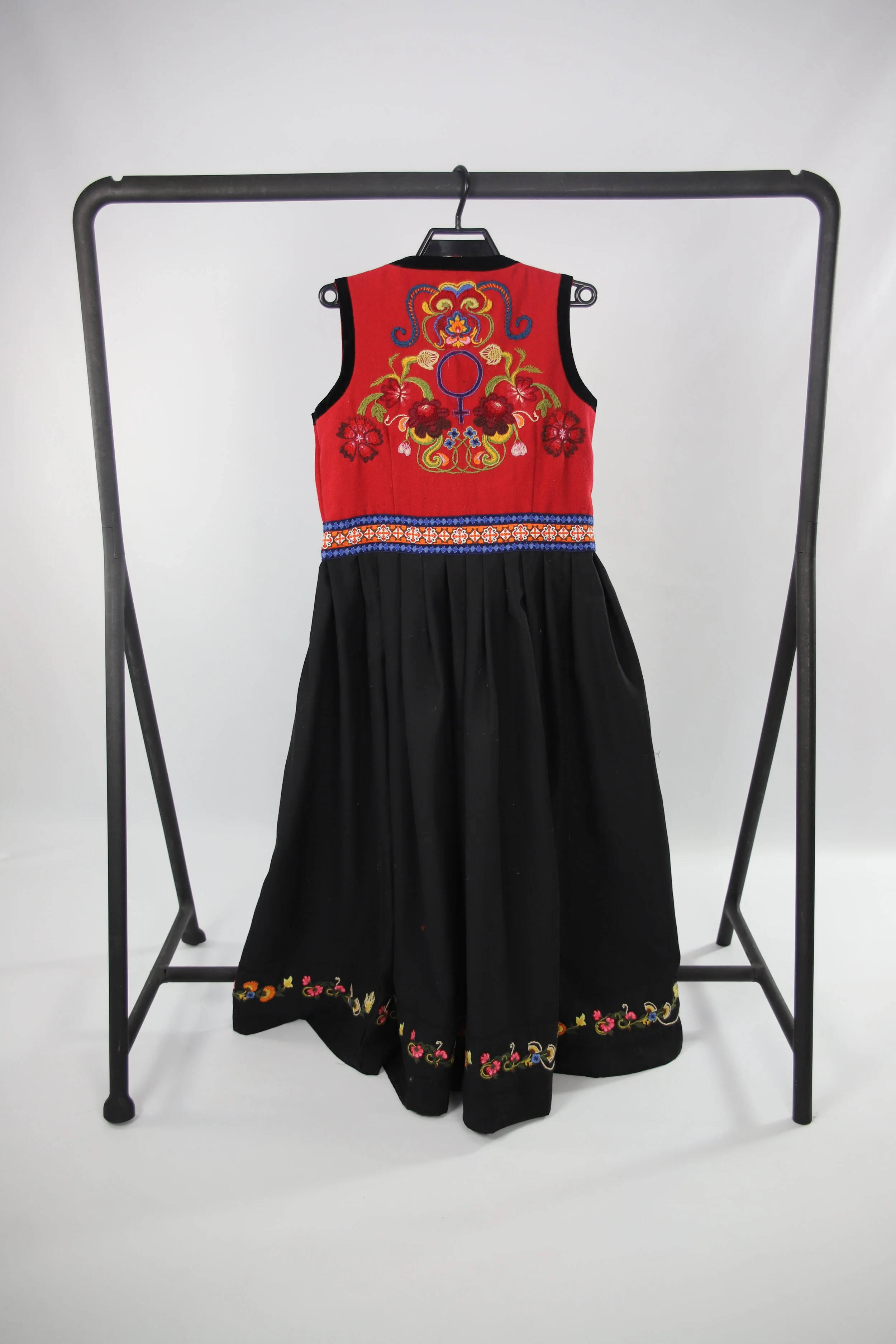











All the photos were taken in small remote places in Norway and have the name of the place as the title.

Ved å møysommelig sy for hånd klær inspirert av nordiske folkedrakter med politiske symboler og tradisjonelle referanser, og ved å bruke lang tid, legges “blod, svett og tårer” et ekstra piff i verket. De politiske folkedraktene fotograferes med kvinner plassert i føde scenario rundt omkring i Norges land. Steder man kanskje aldri har hørt om, små steder, vekk fra nærmeste sykehus. I bildene ligger en historie, et ille varsel og bygger på en dystopisk fremtid (eller nåtid). Samtidig er det nesten komisk med en fødende dame på Toten-Bygda som prater i telefon. De første tre fotografiene og draktene ble vist på gruppeutstillingen SIAMESISK i 2019 på Oppland kunstsenter men målet er å ferdigstille flere drakter og fotografier. Formatet på kunst-serien har til nå vært et fotografi-en folkedrakt men det ligger også i kortene at flere bilder med samme drakt er aktuelle å vise, enten i bokform eller serie. Det tar tid å produsere de politiske folkedraktene og det krever research og materiale. Jeg jobber mye med å bruke så mye gjenvunnet materiale som mulig men visse ting kan man ikke gjenbruke like godt, som sy og broderi-tråd m.m.

By painstakingly sewing by hand clothes inspired by Nordic folk costumes with political symbols and traditional references, and by spending a long time, "blood, sweat and tears" are added to the work. “The political national costumes” are photographed with women placed in birth scenarios around the country of Norway. Places you may never have heard of, small places, away from the nearest hospital. The pictures contain a story, a bad omen and are based on a dystopian future (or present). At the same time, it is almost comical with a woman giving birth in Toten-countryside talking on the phone. The first three photographs and the costumes were shown at the group exhibition SIAMESE in 2019 at Oppland art centre, but the aim is to complete more costumes and photographs. The format of the art series has until now been a photograph-a folk costume, but it is also in the cards that several photos with the same costume are appropriate to show, either in book form or series. It takes time to produce the political folk costumes and it requires research and material. I work a lot to use as much recycled material as possible, but certain things cannot be reused as well, such as sewing and embroidery thread etc.

MOTher
handler om nedlegging av fødesteder i Norge og alle fødsler som skjer på veien til sykehuset fordi reiseveien er for lang. Til tross for at føde-tallene i Norge går ned øker fødslene utenfor institusjon. I Norge fødes det litt over 55 000 barn hvert år. Mellom 400 og 500 av disse blir født uplanlagt i ambulanser, taxier, privatbiler eller på badegulvet i eget hjem. Siden 70-tallet er 110 føde-institusjoner lagt ned. 45 fødetilbud står igjen. Totalt ble det registrert 464 fødsler utenfor institusjon. Av fødslene som skjer uplanlagt hjemme, var flere av fødslene et resultat av at transporten måtte snu og kjøre den gravide hjem, fordi avstanden til sykehuset var for lang.

Alle bildene er tatt på små avsidsliggende steder i Norge og har navnet på stedet som tittel.

MOTher (AGAINST her)
is about the closure of birthing centers in Norway and all births that take place on the way to the hospital because the journey is too long. Despite the fact that the number of births in Norway is falling, births outside institutions are increasing. Born in Norway just over 55,000 children each year. Between 400 and 500 of these are born unplanned in ambulances, taxis, private cars or on the bathroom floor in their own homes. Since the 1970s, 110 maternity institutions have closed down. 45 maternity services remain. A total of 464 births outside an institution were registered. Of the births that take place unplanned at home, several of the births were the result of the transport having to turn around and drive the pregnant woman home, because the distance to the hospital was too long.

Jeg har som mål å produsere like mange drakter/fotografier som det er utenfor-fødsler dvs. 400-500 stk til slutt. Det vil ta tid å ferdigstille, men prosjektet kan stilles ut fortløpende uten å ha mindre virkning, samt vil ha et mektig sluttresultat når alle er ferdig.

I aim to produce the same number of folk costumes/photographs as there are outside births, i.e. 400-500 pieces finally. It will take time to complete, however the project can be exhibited continuously without have less effect, as well as will have a powerful one final score when everyone is done.